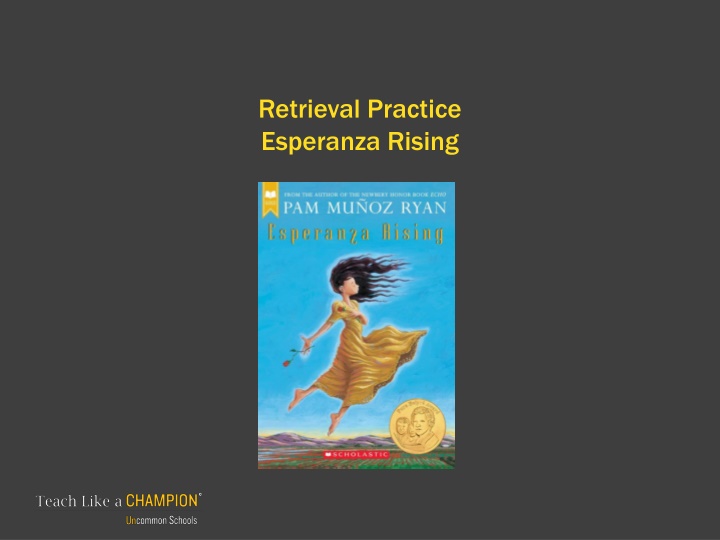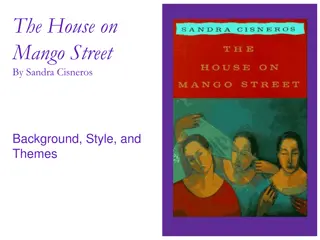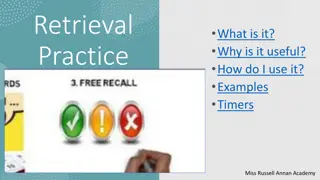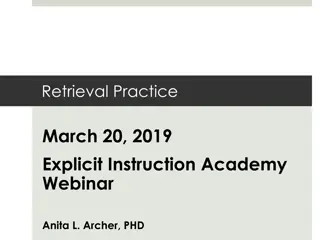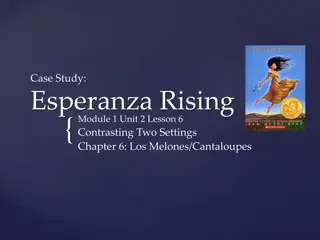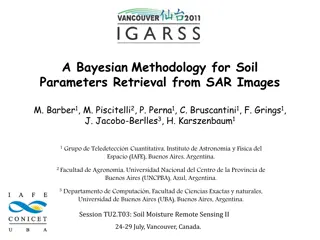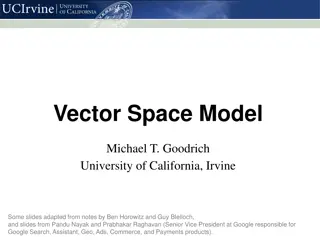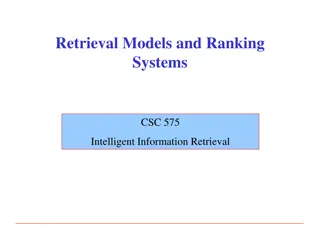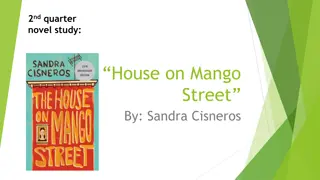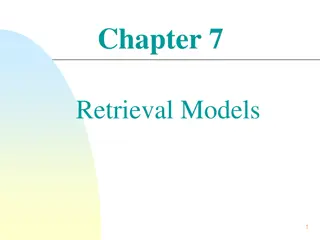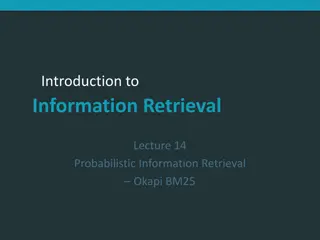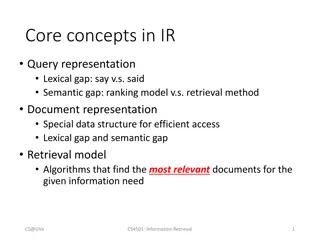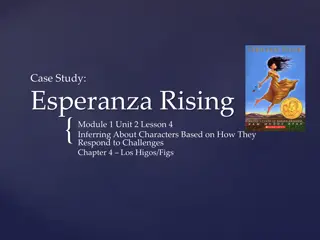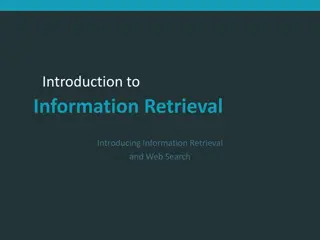Retrieval Practice: Lessons from Esperanza Rising
In these retrieval practice lessons based on "Esperanza Rising," explore concepts like El Rancho de las Rosas, literary devices, historical events such as the Mexican Revolution, gender roles, and more. Test your knowledge and understanding with questions on key themes from the novel and gain insights through detailed answers provided for self-assessment.
Download Presentation

Please find below an Image/Link to download the presentation.
The content on the website is provided AS IS for your information and personal use only. It may not be sold, licensed, or shared on other websites without obtaining consent from the author.If you encounter any issues during the download, it is possible that the publisher has removed the file from their server.
You are allowed to download the files provided on this website for personal or commercial use, subject to the condition that they are used lawfully. All files are the property of their respective owners.
The content on the website is provided AS IS for your information and personal use only. It may not be sold, licensed, or shared on other websites without obtaining consent from the author.
E N D
Presentation Transcript
Retrieval Practice Esperanza Rising
Retrieval Practice: Lesson 6 1. What is El Rancho de las Rosas El Rancho de las Rosas? 2. Mother Nature is an example of which literary device literary device? 3. In 1910, the Mexican Revolution Mexican Revolution began. What group revolted? Take 3 minutes to complete these questions 4. Why did they revolt? 5. What character in the novel is described as el jefe and Papa s compa ero?
Retrieval Practice Answers: Lesson 3 El Rancho de las Rosas is the name of Esperanza s family s home. It means the Ranch of the Roses. 1. 2. Mother Nature is an example of personification. Pam Munoz Ryan gives nature qualities of a mother with images of birth. 3. The campesinos campesinos (poor farm workers) revolted in the Mexican Revolution the Mexican Revolution. 4. The campesinos campesinos revolted because they believed the land laws which stated small farmers and poor people could not own farms, were unjust. 5. Alfonso is described as el jefe and Papa s compa ero. El jefe means boss of the field workers, and companero means close friend and companion. Self-score: ______ /5
Retrieval Practice: Lesson 8 1. What is the phoenix phoenix? 2. Abuelita compared the peaks and valleys in her crocheted blanket to the hardships and pleasures of life. This is an example of what literary device literary device? 3. 3. Gender roles Gender roles have played a part in T o Luis behavior. What is a gender role gender role? 4. What is caste caste? 5. The Aztecs were an indigenous (or native) tribe that established an empire in Mexico around 1200. Who conquered the Aztecs in 1521? Take 3 minutes to complete these questions
Retrieval Practice: Lesson 8 6. How did Mexico change in 1821? 7. What happened to the caste system caste system after Mexican independence? 8. What did Mexico lose in the Mexican American war? 9. 100 years after Mexico became independent, the Mexican Revolution Mexican Revolution started. Why? 10. What was promised to the campesinos campesinos? Take 3 minutes to complete these questions
Retrieval Practice Answers: Lesson 8 1. The phoenix phoenix is a young bird that is reborn from its own ashes. 2. Abuelita s comparison of her crotched blanket s peaks and valleys to the hardships and pleasures of life is a symbol. 3. A gender role gender role is used to describe the expected behavior for someone based on their gender. 4. A caste caste is a system of dividing society into hereditary groups. One s caste determined how high in society one could go. 5. Spain conquered the Aztecs in 1521. They controlled and discriminated against native people ( Indians ).
Retrieval Practice Answers: Lesson 8 (continued) 6. In 1821, Mexico won its freedom from Spain. 7. After Mexican independence, the caste system however, it still influenced behaviors and beliefs long after Spanish rule. caste system was officially abolished, 8. Mexico lost Texas, California, New Mexico and Arizona to the United States in the Mexican Mexican- -American War. American War. 9. The Mexican Revolution Mexican Revolution started because poor farm workers (campesinos united to fight the great disparity between the rich and the poor and the exploitation and terrible treatment of workers. campesinos) 10. The campesinos campesinos were promised rights if they won. Self-Score ______/10
Retrieval Practice: Lesson 12 1. Who are migrant workers migrant workers? 2. What was the Great Depression Great Depression? 3. Why would there have been a lot of migrant workers Depression Depression? migrant workers during the Great Great 4. What is a shanty town shanty town? 5. How does Esperanza s labor camp labor camp compare to a typical shanty town shanty town? 6. What was the Okie migration Okie migration? 7. What is The Golden State The Golden State and why was it called this? Take 3 minutes to complete these questions
Retrieval Practice Answers: Lesson 12 1. Migrant workers are farmers who move from place to place to harvest different crops in different seasons. 2. The Great Great Depression Depression was a period of time in the United States starting in 1929 when the stock market crashed. It wiped out much of people s savings and devastated the economy. The unemployment rate reached 25%. 3. There were many migrant workers were many farmers who lost their farms due to the Dust Bowl forced off their land and made their way to any place where they could work harvesting crops. migrant workers during the Great Depression Great Depression because there Dust Bowl. They were 4. A shanty town shanty town is a temporary camp filled with shelters where the walls and roof are patched together with different materials. They often have dirt floors and rarely had running water. They are harsh living conditions.
Retrieval Practice Answers: Lesson 12 (continued) 5. Esperanza s labor camp is slightly better compared to a typical shanty town because it has running water. . shanty town 6. The Okie migration Okie migration is when farmers from the Great Plains moved to California to seek work. As many as 7,000 arrived per month. There are not enough jobs for them and are often turned away at the border. 7. The Golden State Golden State was California. It was called this because people spoke of it as a paradise filled with flourishing farms and jobs. Self-Score ______/7
Retrieval Practice: Lesson 13 1. Who was Dorothea Lange Dorothea Lange? 2. Describe the content or style of her photographs. Take 3 minutes to complete these questions 3. What is labor strike labor strike? 4. Why would someone participate in strike strike? 5. What happened to the population of California between 1860 and 1930? Why do you think that was? 6. Why did wages was prospering? wages drop for migrant laborers migrant laborers even though the California economy
Retrieval Practice Answers: Lesson 13 1. Dorothea Lange was an American photographer whose portraits of migrant workers and farmers during the Great Depression became world famous. 2. Her photographs brought conditions of the rural poor to the public s attention. 3. A labor strike labor strike is a when workers refuse to work and try to prevent others from working. 4. Workers might strike strike to get better working conditions and/or pay. 5. From 1860 1930 the population of California increased to 3.5 million which was 10 times the population in 1860. 6. prospering because there were more workers than there were jobs. Employers could lower the wage and find someone willing to work for the lower wage. Wages ages dropped for migrant laborers migrant laborers even though the California economy was Self-Score ______/6
Retrieval Practice: Lesson 16 1. If you lived in the San Joaquin Valley San Joaquin Valley, what would you grow accustomed accustomed to seeing? 2. Some might argue the valley was exploited exploited. Why? 3. Many would argue the workers in the valley were exploited exploited. Why? 4. Describe the living conditions living conditions of migrant workers during this time. 5. This caused labor unrest labor unrest. What does that refer to? Take 3 minutes to complete these questions 6. What is a labor strike labor strike? 7. What is the goal of a labor strike labor strike? ?
Retrieval Practice Answers: Lesson 16 1. If you lived in the San Joaquin Valley of yellow, brown and green. The land was flat and very fertile with lots of different crops growing in large quantities. San Joaquin Valley you might see field after field in shades 2. The farmers exploited and selling as many crops as possible. exploited the land of the San Joaquin Valley San Joaquin Valley growing, harvesting, 3. The workers in the valley were exploited work long hours in dangerous living conditions. exploited because they were paid very little to 4. The living conditions during this time were dangerous and unhealthy. Water had to be carried from a river or ditch. There was human and animal waste and often farming chemicals in the water. 5. 5. Labor unres Labor unrest is when farm workers form unions and strike in response to poor treatment and abuse by farm workers.
Retrieval Practice Answers: Lesson 16 (continued) 6. A labor strike labor strike is when workers refuse to work and try to prevent others from working. 7. Workers strike strike to get better working conditions and pay. Self-Score ______/7
Retrieval Practice: Lesson 18 1. What does it mean to be a migrant migrant worker? 2. Some consider Okies Okies to be refugees. refugees. How is that different from being a migrant migrant? 3. Some of the migrant workers want to strike strike strike? strike for better conditions conditions. What does it mean to 4. Give an example of some of the poor conditions subjected to. conditions agriculture workers in California were 5. What is a dust storm dust storm? Take 3 minutes to complete these questions 6. What is the Dust Bowl Dust Bowl? 7. What is the connection between the Dust Bowl Dust Bowl and Okies Okies?
Retrieval Practice: Lesson 18 1. A migrant worker migrant worker is a farmer who moves from place to place to harvest different crops in different seasons. 2. A refugee is different than a migrant worker their home in order to escape war, persecution or natural disaster. An Okie fled their home because of the Dust Bowl Dust Bowl which was a natural disaster caused by drought. migrant worker because they are forced to leave Okie 3. A strike strike means the workers will refuse to work and try to prevent others from working until the farm owners agree to improve the working conditions or pay. 4. Agricultural workers were subjected to living in tiny shacks, often with no running water and dirt floors. Human and animal waste as well as farm chemicals seeped into their water. 5. A dust storm dust storm is a storm that is made up of strong winds that blow lose soil from over farming into the air making it hard to see and breathe.
Retrieval Practice: Lesson 18 (continued) dust bowl was when the Great Plains were over farmed leading to massive dust storms that ruined farms forcing thousands of farmers off their land. 6. The dust bowl 7. The dust bowl dust bowl caused farmers to leave Texas, Oklahoma, and Arkansas in search of jobs in California. They were poor and desperate and disparagingly called Okies. Okies. Self-Score ______/7
Retrieval Practice: Lesson 23 1. What is segregation segregation? 2. Give an example of prejudice United States during this time. prejudice or discrimination discrimination faced by Mexican immigrants in the 3. What does Esperanza compare to a cocoon cocoon? Why? Take 3 minutes to complete these questions 4. What was repatriation repatriation? 5. How is striking striking related to repatriation repatriation? Bonus Bonus. How long does Esperanza need to work to have enough money to get Abuelita?
Retrieval Practice Answers: Lesson 23 1. 1. Segregation Segregation refers to legally separating groups of people by race, class, or ethnic group. 2. Examples of prejudice Some stores refused to serve Mexicans. It was assumed that Mexicans were only capable of doing hard labor rather than more skilled trades. Mexicans were given poorer living conditions that the Okies. California made it illegal for a white person to marry non-white person. California made it illegal for any person who could not read the Constitution in English or write his name to vote. prejudice and discrimination discrimination faced by Mexican immigrants include . . . 3. Esperanza compares her camps to a cocoon because it protects her from the discrimination she might experience outside the camp the same way a cocoon protects a caterpillar. The school is not segregated by ethnicity and Esperanza thinks this too protects her as the workers are united in their poverty.
Retrieval Practice Answers: Lesson 23 (continued) 4. 4. Repatriation Repatriation is the sending back of an immigrant to the country they were born in. 5. 5. Striking Striking is related to repatriation gather up by the local government and repatriated to Mexico. Many of the people that were returned to Mexico were legal American citizens. repatriation because in the novel, those who went on strike strike were Bonus: Bonus: Esperanza needs to work until the peach harvest to earn enough money to bring Abuelita to California. Self-Score ______/5
